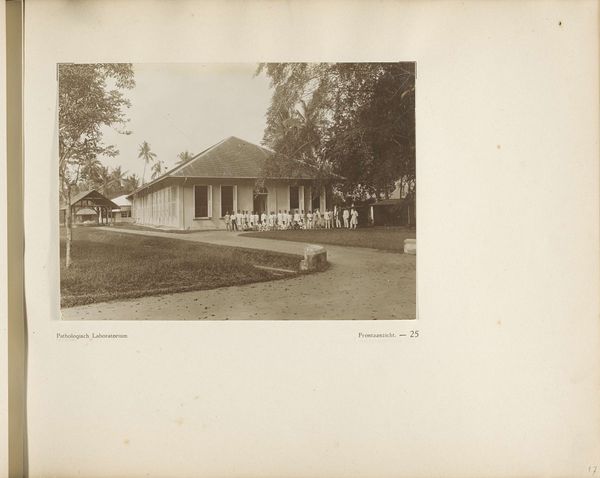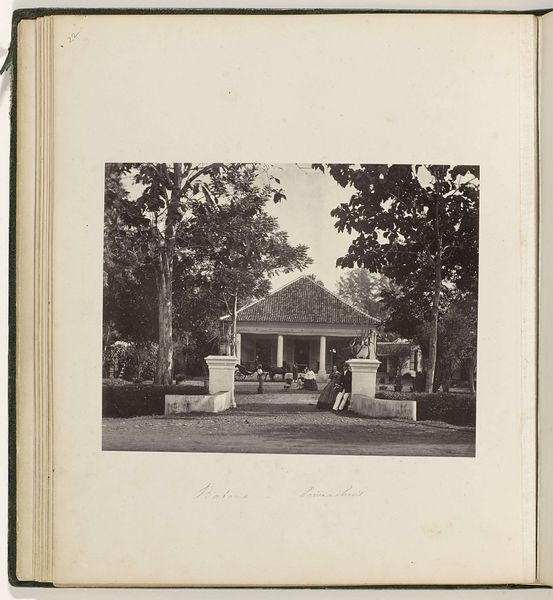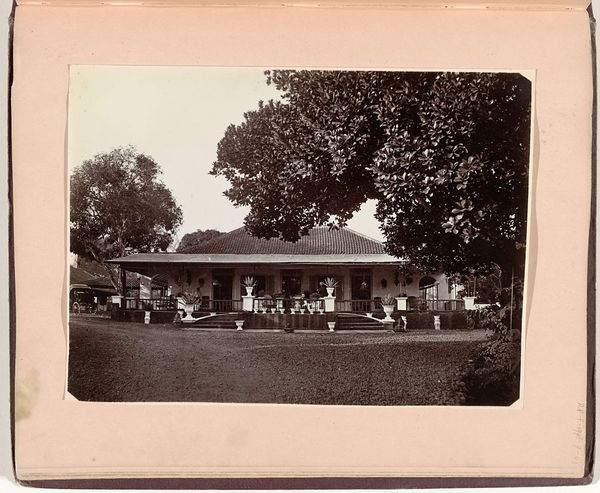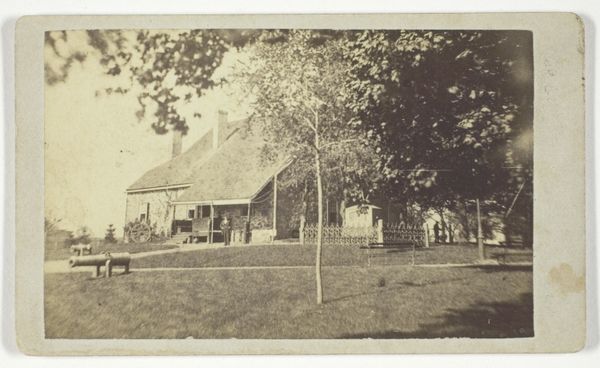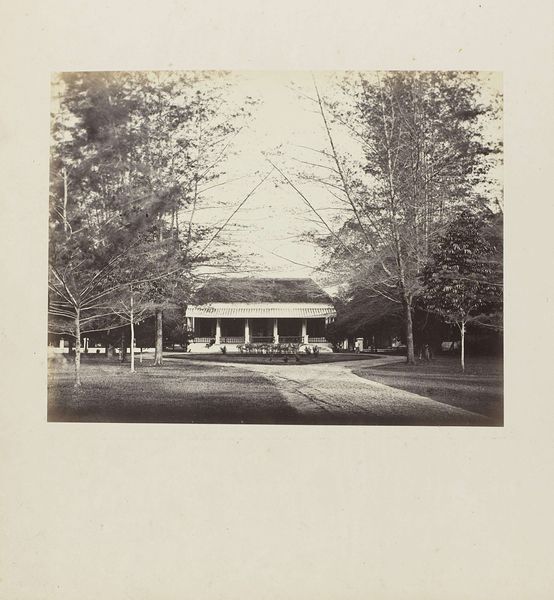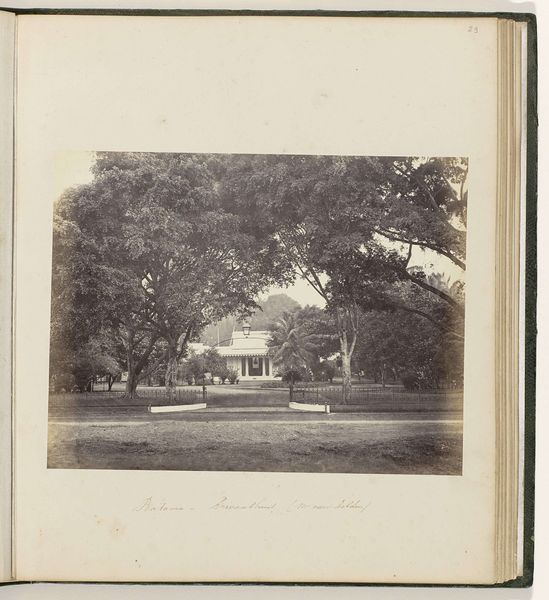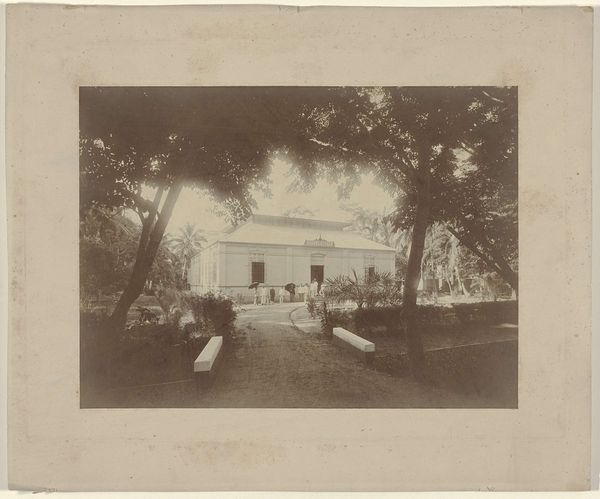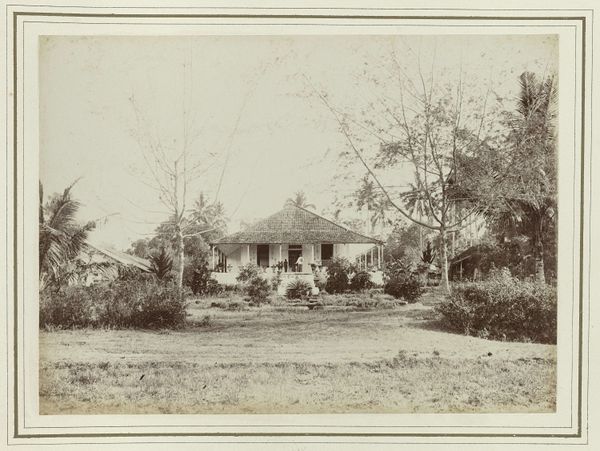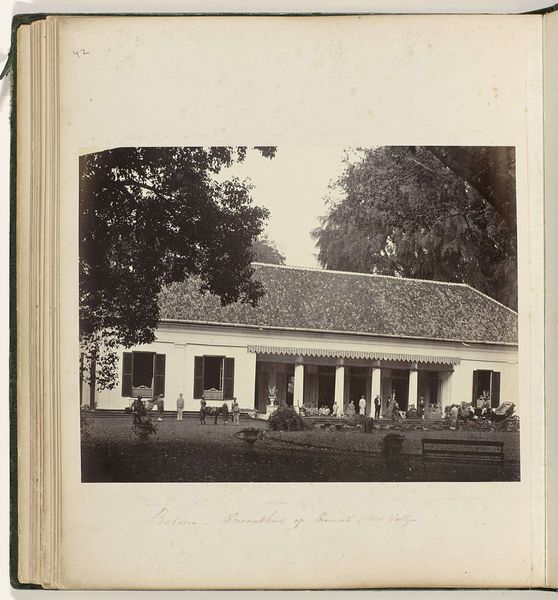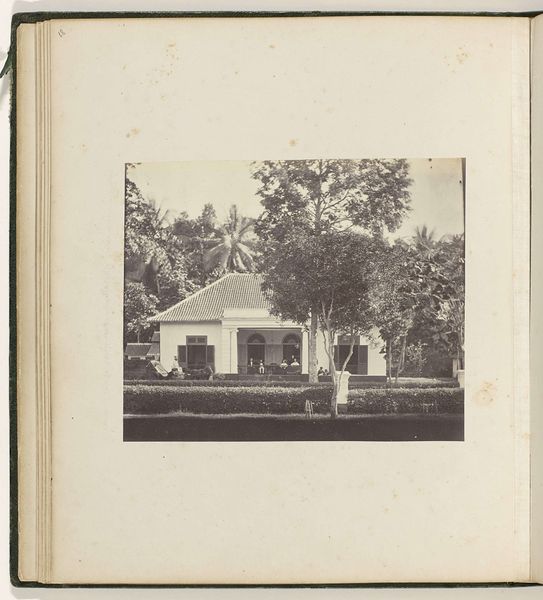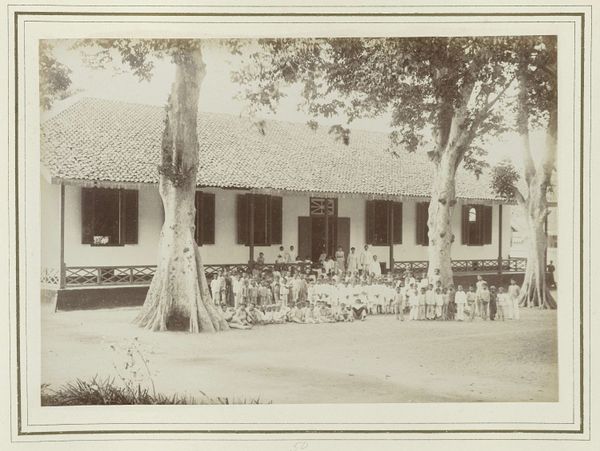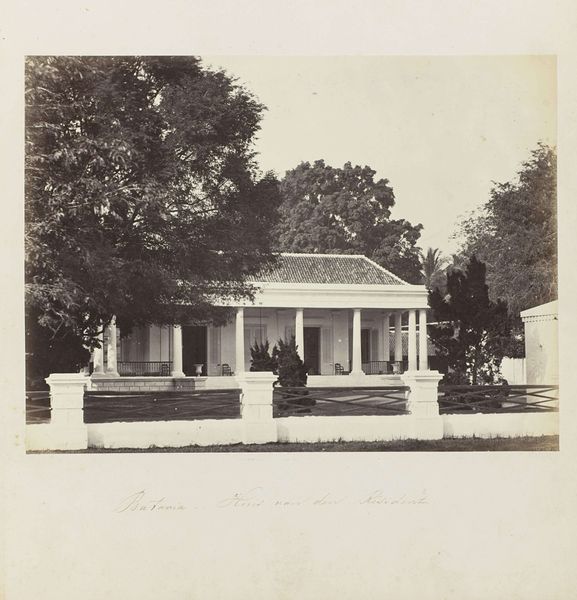
photography, site-specific, albumen-print
#
landscape
#
photography
#
orientalism
#
site-specific
#
cityscape
#
albumen-print
Dimensions: height 205 mm, width 272 mm
Copyright: Rijks Museum: Open Domain
Curator: This albumen print, titled "Batavia - Privaathuis op Tanah-Abang (mr Tolson)," was captured between 1863 and 1866 by Woodbury & Page. The work, currently held at the Rijksmuseum, offers a glimpse into the architectural landscape of the former Dutch East Indies. Editor: It's such a static image, isn’t it? A kind of studied calm, this colonial residence almost posed amidst all the lush greenery. There’s a constructed serenity here. Curator: Precisely. These types of photographs from the period played a critical role in constructing and disseminating a particular vision of the colonial space, aimed at projecting a sense of order and domesticity onto a complex social reality. The subject of "Mr. Tolson’s private house" and its location, Batavia—now Jakarta—indicates not only an exoticised landscape but a Westernised foothold in this new world. Editor: You see it everywhere; the meticulously placed garden pots acting as little indicators of ownership, framing a residence seemingly made from European materials. Consider the labour involved in maintaining this idyllic setting and producing these materials in the first place! It points directly to a system of extraction and unequal power. Curator: Certainly, the photograph underscores colonial hierarchies. The choice of an albumen print itself highlights the era’s technological advancements—serving the function of creating reproducible imagery used to represent and reinforce social structures, even as "landscape" and "Orientalism" are used here as mere designators. Editor: Looking at the material make-up of the residence too, there is a whole global exchange occurring for it to exist; labour for clearing the land, quarrying for materials, carpentry to create the home itself. What did it displace? What was extracted to build it? Even the way light renders on the glossy surface tells a silent tale of global exchange, colonial design, and materiality. Curator: It's an evocative visual document, showcasing both the ambition and artifice inherent in colonial representation. Editor: It serves as a powerful, albeit silent, reminder of how images like these shaped perceptions and power dynamics within the colonial project. A deceptively still image, pregnant with complex meaning.
Comments
No comments
Be the first to comment and join the conversation on the ultimate creative platform.
